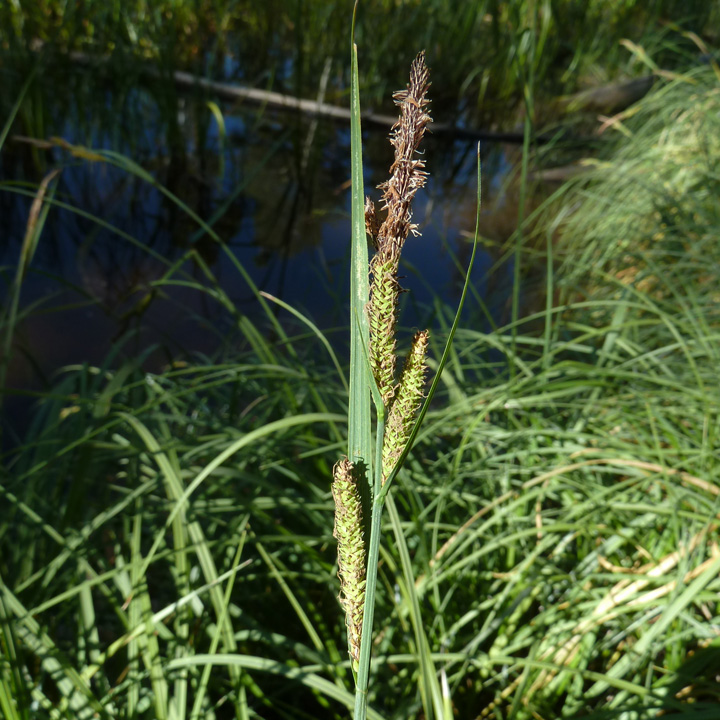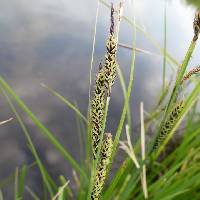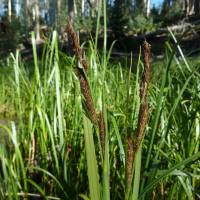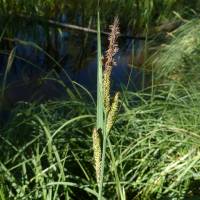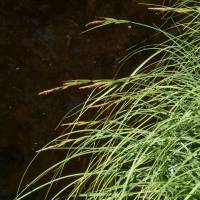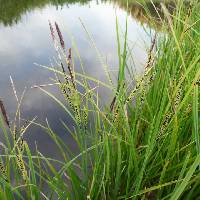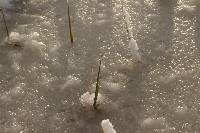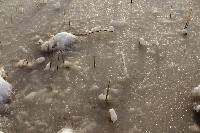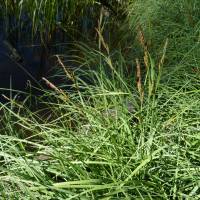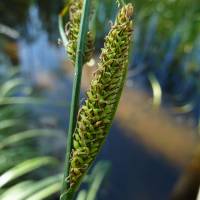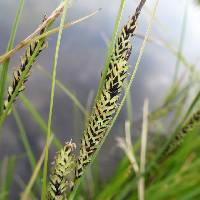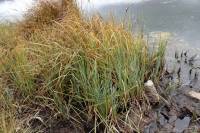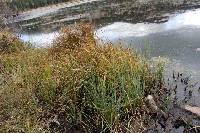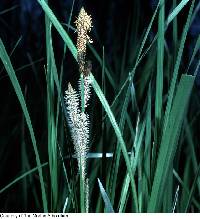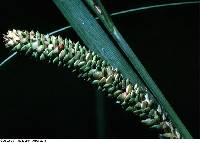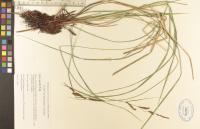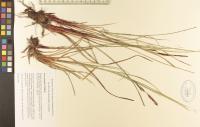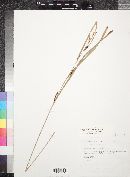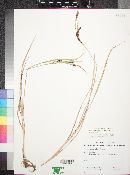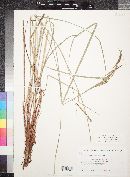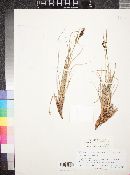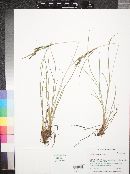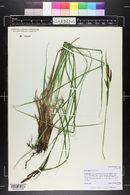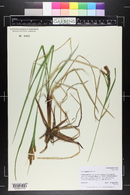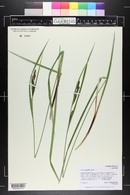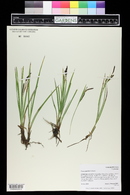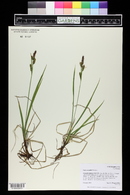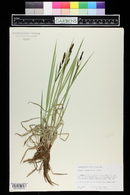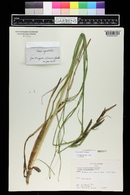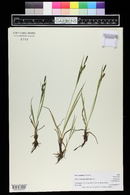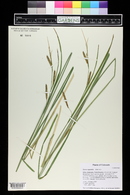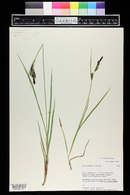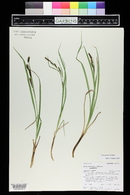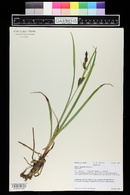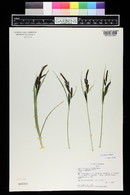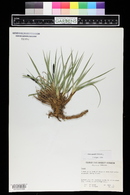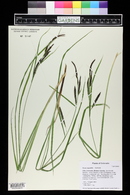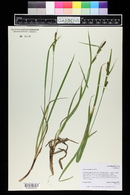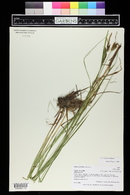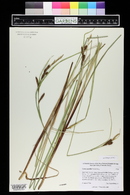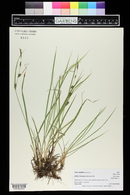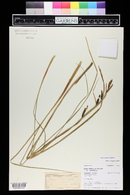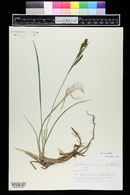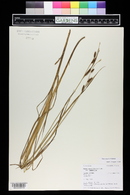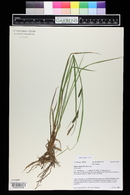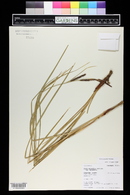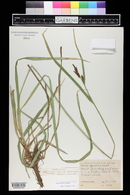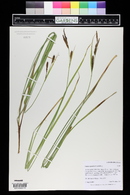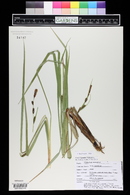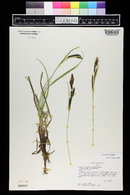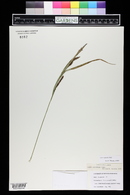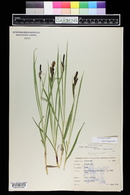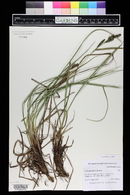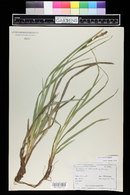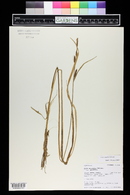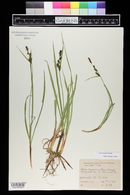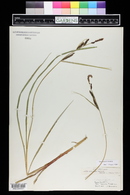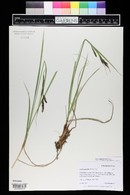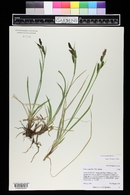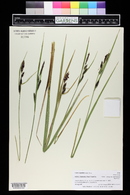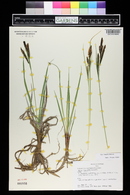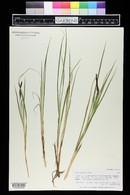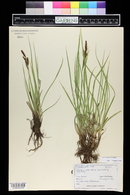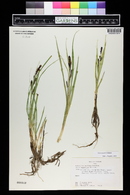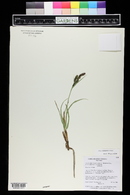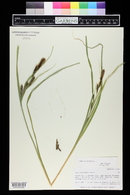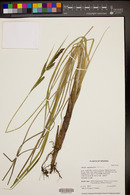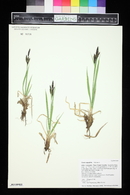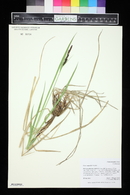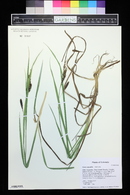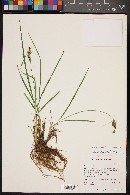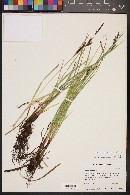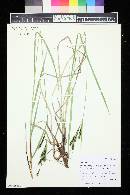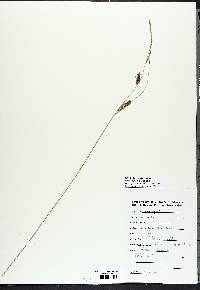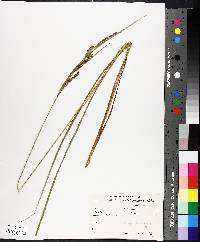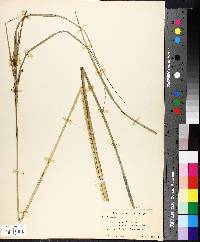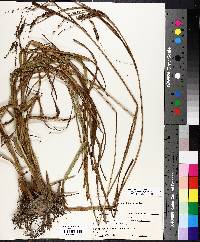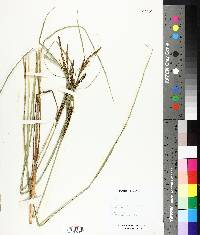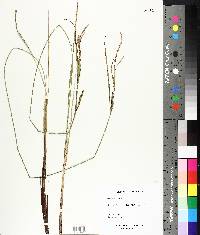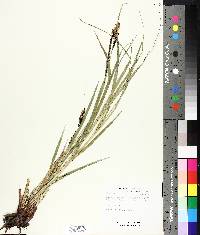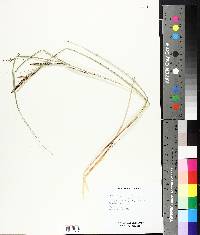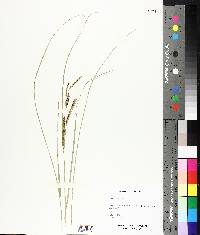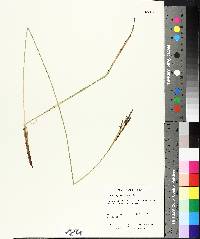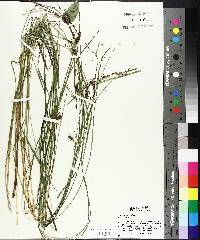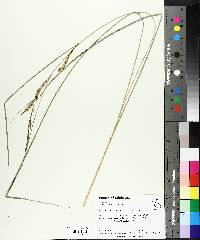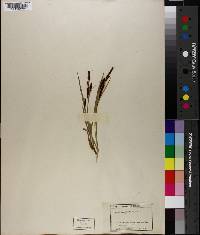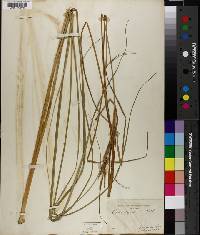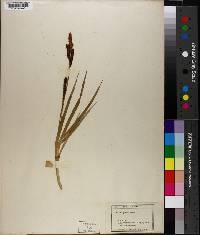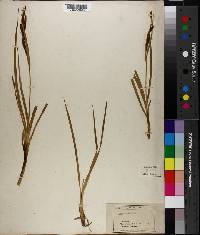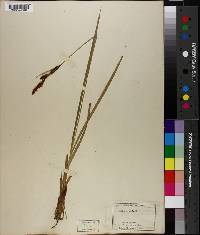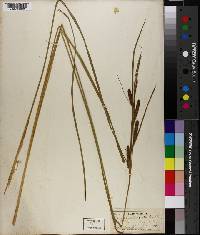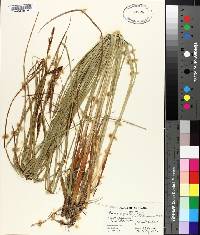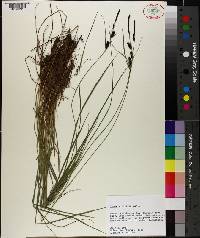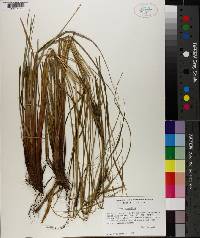Carex aquatilis
|
|
|
|
Family: Cyperaceae
Leafy Tussock Sedge, more...water sedge
[Carex chionophila, moreCarex suksdorfii var. ovalis] |
Plants not cespitose. Culms 20-150 cm. Leaves: basal sheaths red-brown or brown; sheaths of proximal leaves glabrous, fronts with indistinct spots, veinless, apex U-shaped; blades usually amphi-stomic, papillose on both surfaces. Inflorescences: proximal bract longer than inflorescence. Spikes: erect; proximal 2-6 spikes pistillate; terminal (1-)2-4 spikes staminate. Pistillate scales red-brown to purple-brown, apex obtuse or acute, awnless. Perigynia ascending, veinless, somewhat flattened, loosely enclosing achenes, ellipsoid or obovoid, dull, apex obtuse or acute, papillose. Achenes not constricted, glossy. 2n = 72-80. Carex aquatilis is circumboreal and variable; four extensively intergrading varieties are recognized in North America. The species is distinguished by amphistomic (epistomic in var. dives) papillose leaves, glabrous sheaths with a concave apex, perigynia that lack veins and are usually brown-spotted on the proximal half, and have glossy achenes.
VPAP (Rink and Licher 2015), Allred and Ivey 2012 Common Name: Water-sedge Duration: Perennial Nativity: Native Lifeform: Graminoid General: Perennial, grass-like herbs, 20-120 cm tall; stems arising singly or several together from stout, scaly rhizomes; stems solid (not hollow) and obtusely to acutely triangular, usually shorter than the leaves, and smooth or scabrous. Vegetative: Leaf bases form sheaths around the stems, with the blades diverging from the stem spirally in 3 ranks; blades linear and grasslike, 2-8 mm wide, and usually longer than the stems, light green to glaucous green, and long-tapering to a pointed tip; sheaths Inflorescence: Inflorescence a terminal raceme, 7-16 cm long, of several compact spikes; the 1 or 2 spikes closest to the branch tips consist of only male (staminate) flowers and 2-4 spikes below that consist mostly of female (pistillate) flowers, with perhaps a few male flowers near the tips of the upper female spikes; the lowest female spike is 1-5 cm long, on a peduncle up to 1 cm long, and subtended by a long bract, 1-4 mm wide, which resembles a leaf blade and is frequently longer than the entire inflorescence. The flowers are tiny and lack petals and sepals; instead each flower is subtended by a scale; male flowers contain 3 stamens which may be visible emerging from behind the scale, or on older material the stamens may be absent and only a scale remains of each male flower; female flowers contain a structure called a perigynium, which encompasses the ovary (and later encompasses the seed), and terminates in a beak with the style and 2 stigmas emerging from the top; scales on female flowers are ovate to lanceolate, usually narrower than the perigynia, and dark red-brown to purplish black, with or without a pale green midvein and truncate to acuminate at the tip; perigynia are 2-4 mm long and 2 mm wide, elliptic to obovate, somewhat flattened and loosely enclosing the seed, the surface pale, often with reddish-brown spots or suffused with reddish brown, nerveless or nearly so, dull, papillose (covered with tiny bumps), and topped with a tiny pale brown beak; seeds one per female flower, lenticular (lens or lentil-shaped), 1–2 mm long, dull to glossy. Ecology: Found in wet meadows, ponds and lakeshores, and growing in or on the banks of sluggish streams, from 7,500-9,500 ft (2286-2896 m); flowers Jun–Aug. Distribution: This is a circumboreal species, in N. Amer. It occurs from coast to coast, from the arctic south to CA, n AZ and NM, New Brunswick to VA; it is absent from TX and the South. Notes: There are 4 varieties, with only var. aquatilis found in AZ — It is infrequent in AZ, with records only from a few high elevation locations. It was previously thought to be more widespread, primarily based on misdeterminations of Carex senta and C. emoryi. Carex aquatilis is distinguished from C. senta by the sheaths not becoming ladder-fibrillose, and having veinless perigynia. It can be separated from Carex emoryi by having perigynia that lack veins and having darker pistillate scales (usually) with narrower midveins. Carex emoryi seems to be restricted to Marble Canyon along the Colorado River upstream of river mile 40 at elevations below 4000 ft, whereas C. aquatilis is restricted to elevations greater than 7000 ft in AZ. Ethnobotany: Unknown Etymology: Carex comes from the Greek word kerein, to cut, alluding to the sharp-edged leaves of some species; aquatilis means aquatic, growing in or near water. Editor: AHazelton 2017 Vigorously and densely rhizomatous, commonly forming large clumps or a turf, the flowering stems 3-10(-15) dm, surrounded by the dried-up lf-bases of the previous year; lower sheaths red-tinged, lvs mostly 2-7 mm wide; spikes mostly 3-7, cylindric, approximate to ±remote, mostly (1-)1.5-5 cm, the terminal one staminate (sometimes with a few basal perigynia), sometimes with a smaller staminate spike at its base, the others pistillate or (especially the upper) sometimes androgynous, erect, all sessile or nearly so, or the lower ones often evidently pedunculate; bracts sheathless or nearly so, the lowest one 7-25 cm and mostly surpassing the infl; pistillate scales reddish-brown or tawny to often purplish-black, usually with a paler midrib, generally narrower and often shorter than the perigynia; perigynia spotted or suffused with reddish-brown or purple, elliptic to obovate, ±strongly flattened, 2-3.3 mm including the 0.1-0.3 mm entire beak, 2-ribbed, otherwise nerveless; achene lenticular, distinctly shorter and often narrower than the perigynial cavity; 2n=74-84. In shallow water or wet soil, sometimes in salt-marshes; circumboreal, s. to N.J., Ind., Io., and N.M. Our plants have been called var. substricta K |
|
|
|

